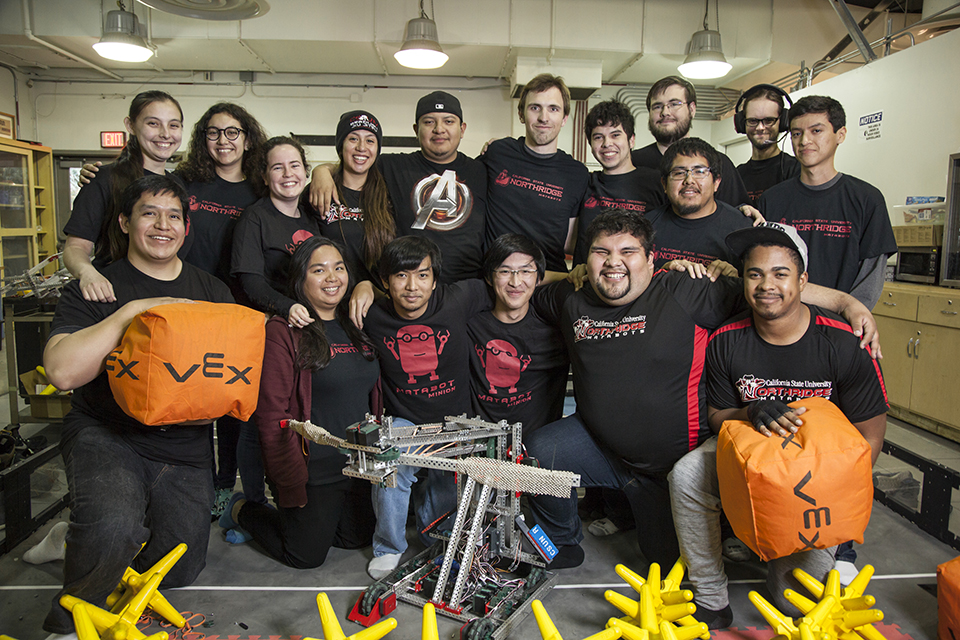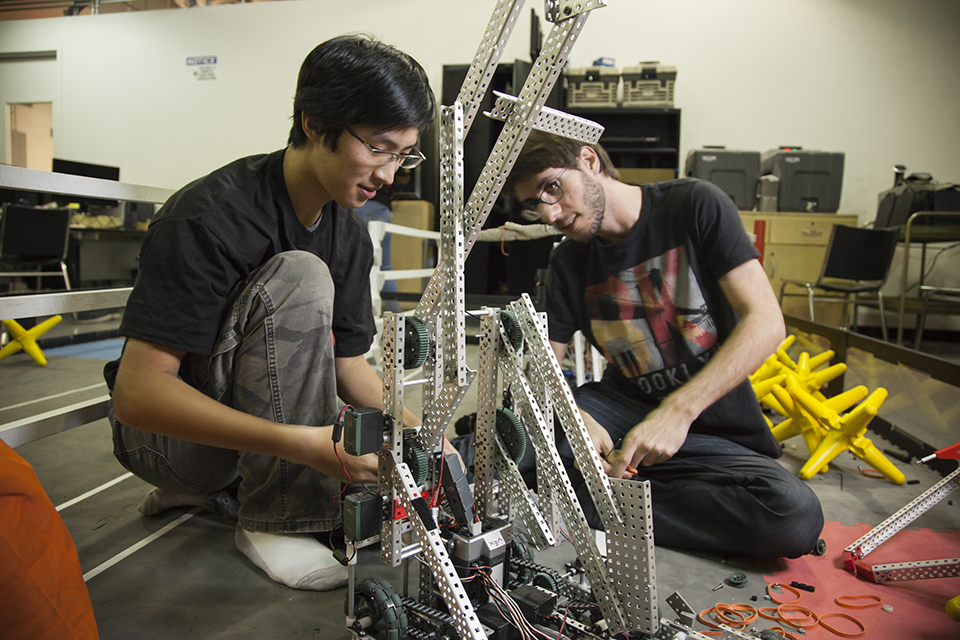CSUN VEX Robotics Club Takes on Worlds
The California State University, Northridge VEX Robotics Club, also known as the Matabots, competed in and won every round of a recent four-round VEX Robotics regional tournament.
VEX Robotics is an international education initiative encouraging students of all ages to discover science, technology, engineering and math (STEM) fields related to robotics design. VEX’s goal is to provide students with opportunities for leadership, teamwork and problem-solving skills.
The CSUN VEX Robotics Club built two robots and divided the participants into two teams for this competition — CSUN R and CSUN B. Adrian Castellon, CSUN VEX Robotics Club president and a mechanical engineering major, said they chose these names to show Matador spirit.
“The teams are CSUN Red and CSUN Black — based on our school colors,” Castellon said. “We wanted to show our school pride.”
Castellon also emphasized that winning the regional tournament, held at the University of Southern California, was a great achievement for the Matabots.
“There were 321 schools registered as a university team, and only 60 of those teams got invited to the World VEX Robotics competition,” he said.
CSUN R and CSUN B went undefeated throughout the tournament and advanced to the finals — setting the teams up for a Matabots showdown in the final event.
The Matabots also won the Excellence Award, earning CSUN B a spot in the VEX Robotics World Championship in Louisville, Ky., from April 19-25. In 2016, the Matabots placed in the top 10 robotics teams in the world.
This year’s competition is themed Starstruck, which Castellon explained will be a mixture of volleyball and “hot potato.”
“There are pre-located [items] on the field,” Castellon said. “Your robot is set on the field in a certain location. The game has two phases: The first is called the autonomous phase [in which the robot is programmed to move on its own].
“You then go on to phase two, which is driver controlled,” he said. “This is where the competitive side comes out because you are competing against other drivers.”
One of the best things about the VEX team doing well is that it’s helping attract students to CSUN, Castellon said. A lot of the high school students who attend the competitions make their college decisions based on a university VEX Robotics team’s performance, he said.
“When they see CSUN placing top five in their division, they’re like, ‘OK, you know what? CSUN has a really good robotics program. I want to go see what their engineering program is like,'” Castellon said.



 experience
experience